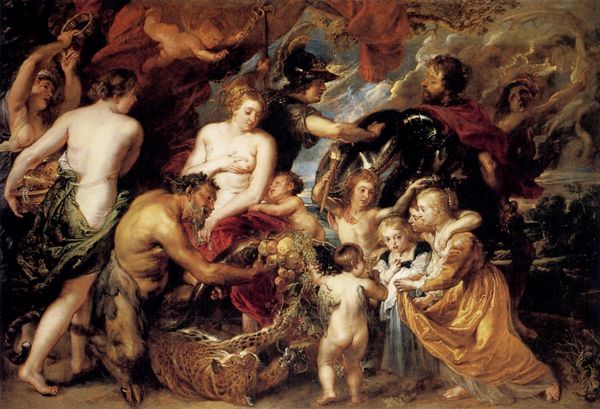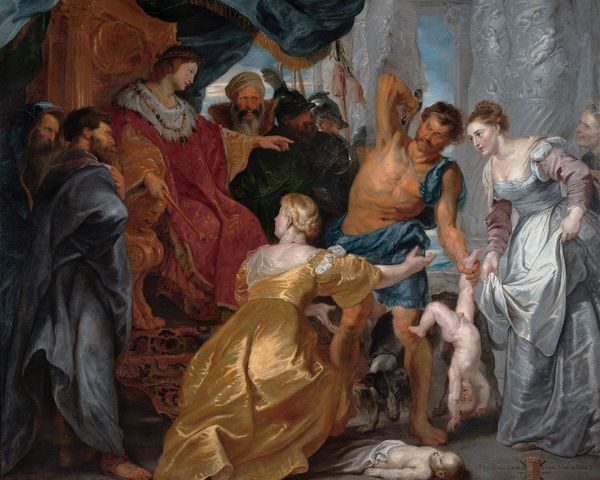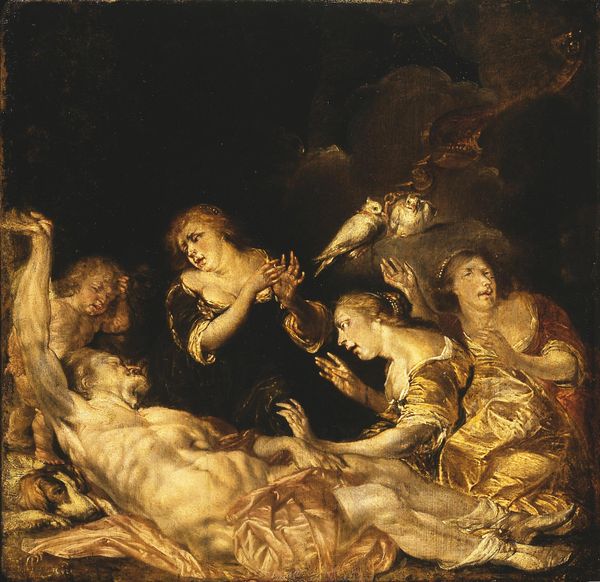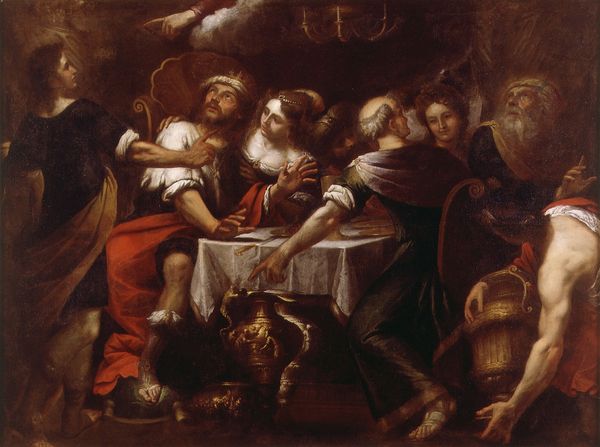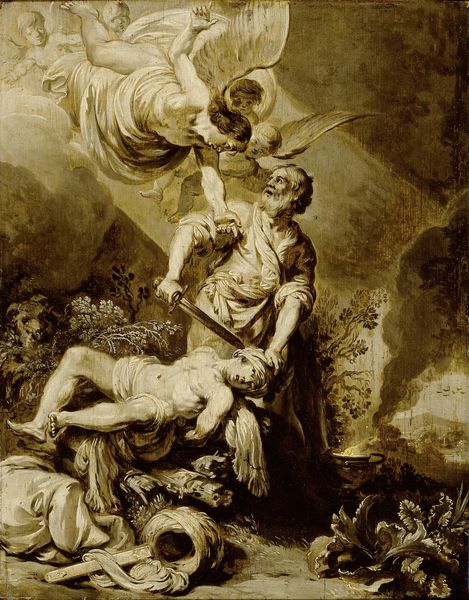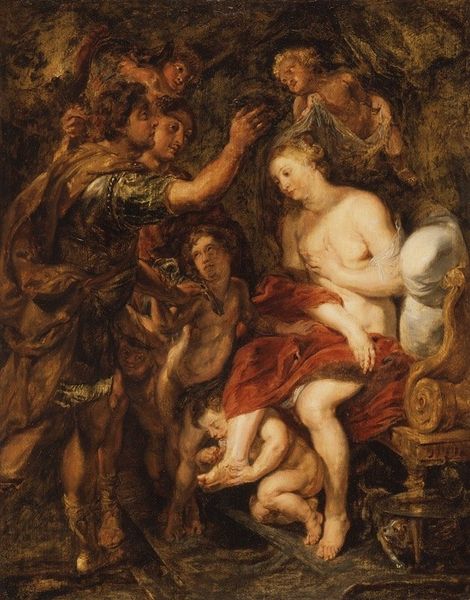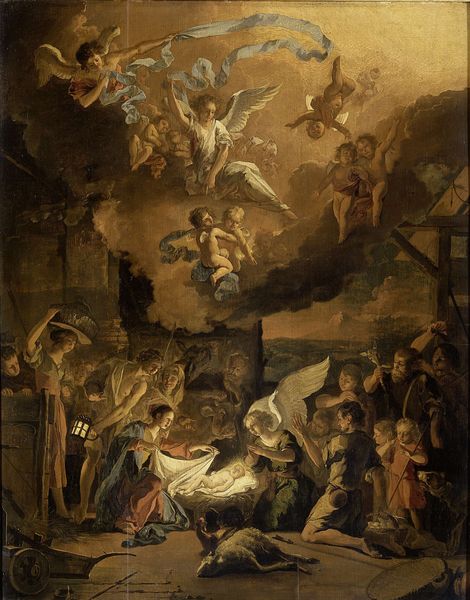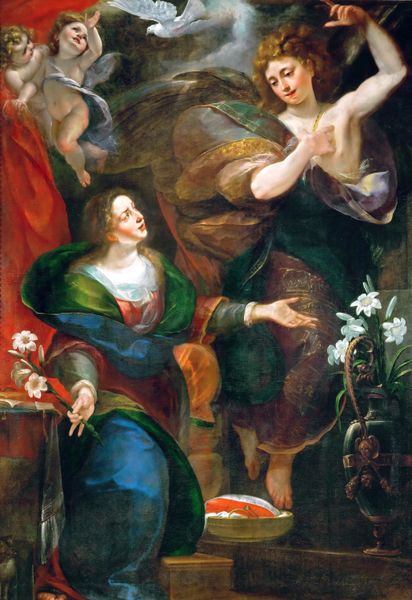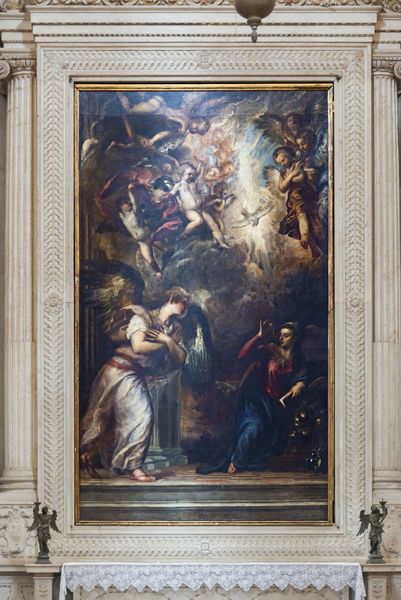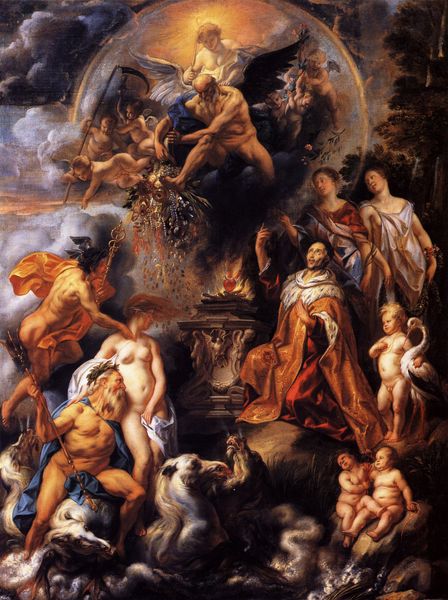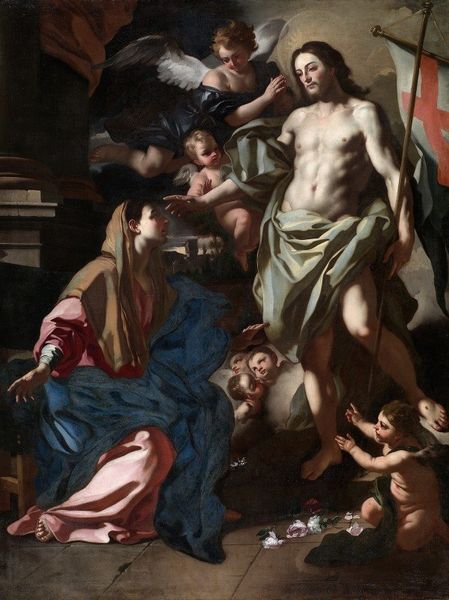
painting, oil-paint
#
portrait
#
baroque
#
painting
#
oil-paint
#
sculpture
#
figuration
#
chiaroscuro
#
history-painting
Dimensions: 477 x 288 cm
Copyright: Public domain
Peter Paul Rubens painted Saint Gregory with Saints Domitilla, Maurus, and Papianus using oil on canvas. It is a traditional medium and process, but it is the scale of the work that speaks to the modes of production. Rubens had a large studio, essentially a factory for paintings. He employed many assistants, each specializing in a different aspect of the work. Some focused on figures, others on drapery, and still others on backgrounds. Rubens himself would then add the finishing touches, ensuring the painting met his standards. Looking closely, you can see how the material qualities of oil paint contribute to the overall effect. The rich, saturated colors and the way the light plays across the surface create a sense of drama and movement. The texture of the paint, applied in thick, expressive strokes, adds to the sense of dynamism and energy. The considerable labor involved reflects the economic structures of the time, with Rubens acting as an entrepreneur overseeing a team of skilled workers. Recognizing the materials, the making, and the context is crucial for understanding the artistic practice and production behind this artwork.
Comments
No comments
Be the first to comment and join the conversation on the ultimate creative platform.

